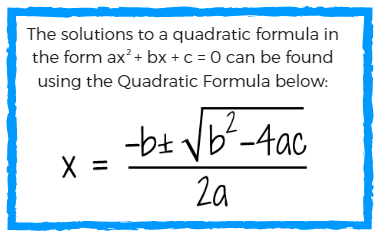Topic i square root of negative 1: Explore the intriguing concept of the square root of negative 1, represented by the imaginary unit i. This article delves into the history, mathematical properties, and real-world applications of i, highlighting its significance in fields such as engineering and quantum mechanics. Join us as we unravel the mysteries of this fundamental mathematical concept.
Table of Content
- The Square Root of Negative One
- Introduction to the Square Root of Negative One
- Historical Context and Development
- Mathematical Definition and Properties
- The Imaginary Unit: i
- Complex Numbers and Their Representation
- Applications in Algebra and Calculus
- Use in Electrical Engineering
- Role in Quantum Mechanics
- Visualization and Graphical Interpretation
- Common Misconceptions and Clarifications
- Educational Resources and Further Reading
- Conclusion: The Importance of i in Mathematics
- YOUTUBE: Khám phá căn bậc hai của số âm một và tầm quan trọng của nó trong toán học. Tìm hiểu về số phức và các ứng dụng của chúng trong khoa học và kỹ thuật.
The Square Root of Negative One
The concept of the square root of negative one, denoted as i, is fundamental in complex numbers and various fields of mathematics and engineering. This imaginary unit i is defined by the property:
$$ i^2 = -1 $$
Understanding i and its Applications
The imaginary unit i is not a real number, but it is essential for extending the real numbers to complex numbers. This extension allows for the solutions of equations that do not have real solutions.
$$ \sqrt{-1} = i $$
Key Properties of the Imaginary Unit
- The principal square root of -1 is i.
- Negative i (\( -i \)) is also a square root of -1.
- In general, the square roots of any negative number \( -x \) are given by \( \pm i \sqrt{x} \).
Operations Involving i
Imaginary numbers follow specific rules when involved in arithmetic operations:
- Multiplication by i results in a rotation in the complex plane.
- Successive multiplications by i cycle through four values:
$$ i^0 = 1, \; i^1 = i, \; i^2 = -1, \; i^3 = -i, \; i^4 = 1 $$
Complex Numbers
Complex numbers combine real and imaginary parts, typically written in the form:
$$ z = a + bi $$
where a is the real part, and b is the imaginary part. These numbers can be visualized on a complex plane, with the real part on the x-axis and the imaginary part on the y-axis.
Applications of Imaginary Numbers
- Complex numbers are used in electrical engineering to analyze AC circuits.
- They are crucial in quantum mechanics for describing wave functions.
- In control theory, they help in the stability analysis of systems.
- They are essential in signal processing and in the solution of polynomial equations.
Example Calculations
- Finding the square root of -9:
- Solving the quadratic equation \( x^2 + 1 = 0 \):
- Multiplying complex numbers:
$$ \sqrt{-9} = \sqrt{9 \cdot -1} = 3i $$
$$ x = \pm i $$
$$ (3 + 4i) \cdot (1 - 2i) = 3 - 6i + 4i - 8i^2 = 3 - 2i + 8 = 11 - 2i $$
Visual Representation
The imaginary unit i and complex numbers can be represented in a two-dimensional plane known as the complex plane:
| Component | Representation |
|---|---|
| Real part (a) | Along the x-axis |
| Imaginary part (bi) | Along the y-axis |
The position of a complex number \( z = a + bi \) in the complex plane is determined by its real and imaginary components.
Conclusion
The imaginary unit i is a powerful concept that extends the real numbers to complex numbers, allowing for a broader range of solutions and applications in mathematics and science.
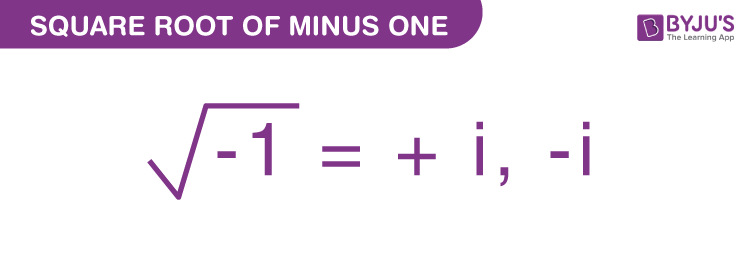
READ MORE:
Introduction to the Square Root of Negative One
The square root of negative one is a concept that extends the real number system to include imaginary numbers. Represented by the symbol \( i \), it is defined by the equation:
\[ i = \sqrt{-1} \]
Understanding \( i \) requires stepping into the realm of complex numbers, where each number has a real part and an imaginary part. Complex numbers are written in the form \( a + bi \), where \( a \) and \( b \) are real numbers.
The imaginary unit \( i \) has several fundamental properties, including:
- \( i^2 = -1 \)
- \( i^3 = -i \)
- \( i^4 = 1 \)
These properties are cyclic, repeating every four powers:
\[ i^n = i^{(n \mod 4)} \]
Imaginary numbers were first conceived in the context of solving quadratic equations that have no real solutions. For example, the equation:
\[ x^2 + 1 = 0 \]
has no solution among the real numbers because no real number squared equals \(-1\). Introducing \( i \) allows us to express the solutions as \( x = \pm i \).
This breakthrough opened the door to the development of complex numbers, which have become an essential part of mathematics, engineering, physics, and many other fields. In summary, the square root of negative one, \( i \), is a foundational concept that extends our understanding and application of numbers beyond the real number line.
Historical Context and Development
The concept of the square root of negative one, denoted as \( i \), emerged from the need to solve equations that had no real solutions. The development of \( i \) has a rich historical context that spans several centuries:
- Ancient Mathematics: Early mathematicians such as the Greeks were aware of quadratic equations but dismissed the possibility of negative square roots as "impossible" numbers.
- Renaissance Period: The first significant use of imaginary numbers arose in the 16th century during the Italian Renaissance. Mathematicians like Gerolamo Cardano began exploring solutions to cubic equations, leading to the consideration of square roots of negative numbers.
- 17th Century: The term "imaginary" was first coined by René Descartes in the 1630s. Despite his skepticism, other mathematicians such as John Wallis began to investigate these numbers further.
-
18th Century: Leonhard Euler made significant contributions by popularizing the notation \( i \) for the square root of -1. He demonstrated that \( i^2 = -1 \) and integrated \( i \) into Euler's formula:
\[
e^{ix} = \cos(x) + i\sin(x)
\] - 19th Century: Carl Friedrich Gauss formalized the theory of complex numbers, defining them as points in a plane with real and imaginary parts. He also introduced the complex plane, a crucial development for visualizing complex numbers.
The acceptance of \( i \) and imaginary numbers marked a significant turning point in mathematical history. These numbers provided a more complete understanding of algebra and opened new avenues in various scientific fields.
Today, \( i \) and complex numbers are integral to numerous disciplines, including engineering, physics, and computer science. The journey from ancient skepticism to modern acceptance underscores the importance of expanding mathematical horizons to embrace new concepts.
Mathematical Definition and Properties
The imaginary unit, denoted as \( i \), is defined as the square root of negative one:
\[ i = \sqrt{-1} \]
This definition extends the real number system to include complex numbers, which are of the form \( a + bi \), where \( a \) and \( b \) are real numbers. The number \( a \) is called the real part, and \( b \) is called the imaginary part.
Key properties of the imaginary unit \( i \) include:
- \( i^2 = -1 \)
- \( i^3 = -i \)
- \( i^4 = 1 \)
These properties exhibit a cyclic pattern, repeating every four powers:
\[ i^n = i^{(n \mod 4)} \]
Complex numbers follow the same arithmetic operations as real numbers, but with additional rules to handle \( i \):
- Addition: \((a + bi) + (c + di) = (a + c) + (b + d)i\)
- Subtraction: \((a + bi) - (c + di) = (a - c) + (b - d)i\)
- Multiplication: \((a + bi)(c + di) = (ac - bd) + (ad + bc)i\)
- Division: \(\frac{a + bi}{c + di} = \frac{(a + bi)(c - di)}{c^2 + d^2} = \frac{(ac + bd) + (bc - ad)i}{c^2 + d^2}\)
One fundamental operation involving \( i \) is finding the conjugate of a complex number. The conjugate of \( a + bi \) is \( a - bi \). Conjugates are useful in division and in simplifying expressions:
\[ (a + bi)(a - bi) = a^2 + b^2 \]
The magnitude (or modulus) of a complex number \( a + bi \) is given by:
\[ |a + bi| = \sqrt{a^2 + b^2} \]
The argument (or angle) \( \theta \) of a complex number in the complex plane is given by:
\[ \theta = \tan^{-1}\left(\frac{b}{a}\right) \]
Combining the modulus and argument, a complex number can also be expressed in polar form:
\[ a + bi = r (\cos \theta + i \sin \theta) \]
where \( r = |a + bi| \) and \( \theta = \arg(a + bi) \). This polar representation is particularly useful in multiplication and division of complex numbers.
Understanding these properties and operations with \( i \) is crucial for solving complex equations and for applications in various fields such as engineering, physics, and signal processing.
The Imaginary Unit: i
The imaginary unit, represented by \( i \), is a fundamental concept in complex numbers, defined as the square root of negative one:
\[ i = \sqrt{-1} \]
This definition means that when \( i \) is squared, the result is negative one:
\[ i^2 = -1 \]
The introduction of \( i \) allows for the extension of the real number system to include complex numbers, which are expressed in the form \( a + bi \), where \( a \) is the real part and \( b \) is the imaginary part.
The properties of the imaginary unit \( i \) include a cyclic pattern in its powers:
- \( i^1 = i \)
- \( i^2 = -1 \)
- \( i^3 = -i \)
- \( i^4 = 1 \)
These properties repeat every four exponents, leading to the general rule:
\[ i^n = i^{(n \mod 4)} \]
Complex numbers and \( i \) are not just mathematical curiosities; they have practical applications in various fields. For example:
- Engineering: Complex numbers are used in electrical engineering to analyze AC circuits and signal processing.
- Physics: Quantum mechanics and relativity often use complex numbers to describe wave functions and spacetime events.
- Mathematics: They are essential in solving polynomial equations, Fourier transforms, and many areas of higher mathematics.
The graphical representation of complex numbers on the complex plane is another important aspect. Here, a complex number \( a + bi \) is represented as a point or a vector originating from the origin (0,0) to the point (a,b). The horizontal axis (real axis) represents the real part, while the vertical axis (imaginary axis) represents the imaginary part.
In summary, the imaginary unit \( i \) is a crucial element in extending our understanding of numbers and solving problems that are unsolvable within the realm of real numbers. Its applications across various scientific and engineering disciplines underscore its significance and utility.

Complex Numbers and Their Representation
Complex numbers are an extension of the real number system, incorporating the imaginary unit \( i \), defined as \( i = \sqrt{-1} \). A complex number is written in the form \( a + bi \), where \( a \) and \( b \) are real numbers, \( a \) is the real part, and \( b \) is the imaginary part.
Complex numbers can be represented in several forms:
- Standard Form: \( a + bi \)
- Polar Form: \( r(\cos \theta + i \sin \theta) \), where \( r \) is the magnitude and \( \theta \) is the argument.
- Exponential Form: \( re^{i\theta} \), derived from Euler's formula.
To understand these representations, consider the following steps:
-
Standard Form:
This is the basic representation of a complex number, \( a + bi \), where \( a \) is the real component and \( b \) is the coefficient of the imaginary component.
-
Polar Form:
In polar coordinates, a complex number is represented by its magnitude \( r \) and angle \( \theta \). The magnitude is calculated as:
\[ r = \sqrt{a^2 + b^2} \]The angle \( \theta \) (also called the argument) is calculated as:
\[ \theta = \tan^{-1}\left(\frac{b}{a}\right) \]Thus, the complex number can be written as:
\[ a + bi = r (\cos \theta + i \sin \theta) \] -
Exponential Form:
Using Euler's formula \( e^{i\theta} = \cos \theta + i \sin \theta \), a complex number in polar form can be expressed exponentially as:
\[ a + bi = re^{i\theta} \]
Operations with complex numbers follow specific rules:
- Addition: \((a + bi) + (c + di) = (a + c) + (b + d)i\)
- Subtraction: \((a + bi) - (c + di) = (a - c) + (b - d)i\)
- Multiplication: \((a + bi)(c + di) = (ac - bd) + (ad + bc)i\)
- Division: \(\frac{a + bi}{c + di} = \frac{(a + bi)(c - di)}{c^2 + d^2} = \frac{(ac + bd) + (bc - ad)i}{c^2 + d^2}\)
The graphical representation of complex numbers uses the complex plane, where the horizontal axis represents the real part and the vertical axis represents the imaginary part. A complex number \( a + bi \) is plotted as a point (a, b) in this plane, facilitating visual understanding of complex arithmetic.
In summary, complex numbers and their representations are fundamental in mathematics and have broad applications in engineering, physics, and beyond. Their various forms and the ability to visualize them in the complex plane provide powerful tools for solving complex problems.
Applications in Algebra and Calculus
The imaginary unit \( i \), representing the square root of negative one, plays a crucial role in both algebra and calculus. Its introduction allows for the solving of equations that have no real solutions and enables deeper exploration of mathematical concepts.
Here are some key applications of \( i \) in algebra and calculus:
Algebra
-
Solving Quadratic Equations:
Quadratic equations of the form \( ax^2 + bx + c = 0 \) may have no real solutions when the discriminant \( b^2 - 4ac \) is negative. By using \( i \), we can express these solutions as complex numbers. For example, for the equation \( x^2 + 1 = 0 \):
\[
x^2 + 1 = 0 \implies x^2 = -1 \implies x = \pm i
\] -
Complex Polynomials:
Using \( i \) and complex numbers, all polynomial equations have solutions in the complex number system, as stated by the Fundamental Theorem of Algebra. This theorem asserts that every non-constant polynomial equation has at least one complex root.
-
Eigenvalues and Eigenvectors:
In linear algebra, complex numbers are used to find eigenvalues and eigenvectors of matrices, especially when dealing with characteristic polynomials that have complex roots.
Calculus
-
Complex Functions:
Functions involving complex numbers, such as \( f(z) = z^2 + 1 \) where \( z = a + bi \), are fundamental in complex analysis. These functions extend the concept of differentiation and integration to the complex plane.
-
Euler's Formula:
Euler's formula, \( e^{ix} = \cos(x) + i\sin(x) \), connects complex exponentiation with trigonometric functions. It is instrumental in solving differential equations and analyzing waveforms in signal processing.
-
Residue Theorem:
In complex analysis, the residue theorem allows for the evaluation of complex integrals by examining the residues of singularities within the integration path. This theorem is a powerful tool for evaluating difficult real integrals.
-
Laplace and Fourier Transforms:
These transforms, used extensively in engineering and physics, rely on complex numbers to convert differential equations into algebraic equations, simplifying the process of finding solutions.
Overall, the introduction of \( i \) and complex numbers has profoundly impacted both algebra and calculus, enabling the resolution of equations and the exploration of functions beyond the scope of real numbers. This has led to significant advancements in various scientific and engineering disciplines.
Use in Electrical Engineering
The imaginary unit \( i \), representing the square root of negative one, is a fundamental tool in electrical engineering. It is extensively used in the analysis and design of electrical circuits, particularly in alternating current (AC) circuit theory and signal processing.
AC Circuit Analysis
In AC circuits, voltages and currents vary sinusoidally with time. Complex numbers simplify the analysis of these circuits by representing sinusoidal signals as phasors. A phasor is a complex number that encodes the amplitude and phase of a sinusoidal function:
\[ V(t) = V_0 \cos(\omega t + \phi) \]
can be represented as a complex phasor:
\[ \mathbf{V} = V_0 e^{i\phi} \]
This allows for the use of complex algebra to analyze circuits instead of solving differential equations.
Impedance
Impedance (\( Z \)) in AC circuits generalizes resistance to account for the phase difference between voltage and current. It is a complex quantity:
\[ Z = R + iX \]
where \( R \) is the resistance and \( X \) is the reactance. Reactance can be inductive (\( X_L = \omega L \)) or capacitive (\( X_C = \frac{1}{\omega C} \)). The total impedance in a circuit determines how the current responds to an applied voltage.
Power Calculations
In AC circuits, power calculations involve real and reactive power, represented using complex numbers. The complex power \( S \) is given by:
\[ S = P + iQ \]
where \( P \) is the real power and \( Q \) is the reactive power. The magnitude of \( S \), called the apparent power, is:
\[ |S| = \sqrt{P^2 + Q^2} \]
Signal Processing
Complex numbers are crucial in signal processing for analyzing and designing filters, modulating signals, and transforming signals between time and frequency domains. The Fourier transform, which decomposes signals into their frequency components, is defined as:
\[ F(\omega) = \int_{-\infty}^{\infty} f(t) e^{-i\omega t} \, dt \]
Using complex exponentials simplifies the mathematics of signal processing and provides powerful tools for understanding signal behavior.
Control Systems
In control systems engineering, complex numbers are used to analyze the stability and response of systems. The poles and zeros of transfer functions are often complex, and their locations in the complex plane determine system behavior.
In summary, the imaginary unit \( i \) is indispensable in electrical engineering, enabling the efficient analysis and design of AC circuits, signal processing systems, and control systems. Its use simplifies complex mathematical operations and provides deeper insights into the behavior of electrical systems.
Role in Quantum Mechanics
The imaginary unit \( i \), representing the square root of negative one, is fundamental in quantum mechanics, the branch of physics that describes the behavior of particles at the atomic and subatomic levels. Its use is pervasive in the mathematical framework that underpins quantum theory.
Wave Functions
In quantum mechanics, the state of a particle is described by a wave function \( \psi \), which is a complex-valued function. The wave function contains all the information about the system and is generally expressed as:
\[ \psi(x,t) = \psi_0 e^{i(kx - \omega t)} \]
Here, \( k \) is the wave number, and \( \omega \) is the angular frequency. The presence of \( i \) in the exponent facilitates the representation of wave-like properties of particles.
Schrödinger's Equation
Schrödinger's equation is the cornerstone of non-relativistic quantum mechanics, describing how the quantum state of a physical system changes over time. The time-dependent Schrödinger equation is given by:
\[ i\hbar \frac{\partial \psi}{\partial t} = \hat{H} \psi \]
where \( \hbar \) is the reduced Planck's constant and \( \hat{H} \) is the Hamiltonian operator. The use of \( i \) ensures that the solutions to the equation are complex wave functions, which can describe interference and superposition phenomena.
Probability Amplitudes
In quantum mechanics, probabilities are derived from the wave function. The probability density \( |\psi(x,t)|^2 \) is the modulus squared of the wave function. This relationship uses the complex conjugate:
\[ |\psi(x,t)|^2 = \psi(x,t) \psi^*(x,t) \]
where \( \psi^* \) is the complex conjugate of \( \psi \). This calculation of probabilities directly involves complex numbers and the imaginary unit.
Operators and Observables
Quantum operators, such as the momentum operator \( \hat{p} = -i\hbar \frac{\partial}{\partial x} \), utilize \( i \) to connect physical observables with wave functions. The imaginary unit ensures that these operators act correctly on complex wave functions to yield real-valued measurements.
Quantum Tunneling
Quantum tunneling, a phenomenon where particles pass through potential barriers higher than their energy, can be described using complex wave functions. The probability of tunneling is determined using the exponential decay of the wave function in the barrier region, which involves \( i \).
Path Integrals
Richard Feynman's path integral formulation of quantum mechanics represents quantum amplitudes as sums over all possible paths, with each path contributing an exponential factor involving \( i \). This formulation uses complex numbers to encapsulate the interference effects of different paths:
\[ \int e^{iS[\text{path}]/\hbar} \, \mathcal{D}[\text{path}] \]
In summary, the imaginary unit \( i \) is indispensable in quantum mechanics, appearing in fundamental equations and concepts that describe the behavior of particles and fields at the quantum level. Its use allows for the precise and comprehensive mathematical treatment of quantum phenomena, revealing the inherently probabilistic and wave-like nature of the microscopic world.
Visualization and Graphical Interpretation
The imaginary unit i, defined as the square root of negative one, plays a crucial role in the field of complex numbers. Visualizing complex numbers and their operations can significantly aid in understanding their properties and applications. Here, we explore how complex numbers can be represented and interpreted graphically.
Complex numbers are typically represented in the complex plane, also known as the Argand plane. In this plane, the horizontal axis represents the real part of the complex number, while the vertical axis represents the imaginary part.
- A complex number z = a + bi can be plotted as a point (a, b) in the complex plane.
- The real part a corresponds to the x-coordinate, and the imaginary part b corresponds to the y-coordinate.
To visualize this, consider the complex number z = 3 + 4i:
- Real part a = 3
- Imaginary part b = 4
This number is represented by the point (3, 4) in the complex plane.
Magnitude and Argument
Two important properties of a complex number are its magnitude and argument:
- The magnitude (or modulus) of a complex number z = a + bi is given by |z| = √(a² + b²).
- The argument (or phase) of a complex number is the angle θ it makes with the positive real axis, given by θ = atan2(b, a).
For z = 3 + 4i:
- Magnitude: |z| = √(3² + 4²) = 5
- Argument: θ = atan2(4, 3)
The magnitude represents the distance from the origin to the point (3, 4), and the argument represents the angle from the positive real axis to the line segment connecting the origin to the point (3, 4).
Graphical Representation
Below is an example of how you might visualize this in the complex plane:
In this diagram:
- The black lines represent the real and imaginary axes.
- The red circle represents the complex number 3 + 4i.
- The blue line represents the vector from the origin to the point (3, 4).
Polar Form
Complex numbers can also be represented in polar form, where a complex number z = a + bi is expressed as z = r(cos(θ) + i sin(θ)), where r is the magnitude and θ is the argument. This can also be written as z = re^(iθ).
For z = 3 + 4i:
- r = 5
- θ = atan2(4, 3)
Therefore, the polar form is:
z = 5(cos(θ) + i sin(θ)) or z = 5e^(iθ)
Understanding the graphical representation of complex numbers helps in visualizing complex operations such as addition, subtraction, multiplication, and division, providing a deeper insight into their properties and applications.
Common Misconceptions and Clarifications
Imaginary numbers, especially the imaginary unit \(i\) which is defined as the square root of -1, are often misunderstood. Here are some common misconceptions and clarifications to help you better understand this concept:
- Imaginary Numbers Are Not Real:
Despite their name, imaginary numbers are a valid and crucial part of mathematics. They are used in various fields such as physics, engineering, and computer science. The term "imaginary" was historically used to distinguish these numbers from "real" numbers, but this does not mean they are fictitious or useless.
- They Have No Practical Use:
Imaginary numbers are extremely useful in real-world applications. For instance, in electrical engineering, they are essential for analyzing AC circuits using complex impedance. In quantum mechanics, they are fundamental in the formulation of wave functions. In control theory, they help design systems with desired stability properties.
- Imaginary Numbers Are Difficult to Understand:
While the concept of imaginary numbers requires a shift from traditional real number thinking, they follow straightforward mathematical principles. The key is to understand that \(i^2 = -1\) and to build on this foundation with practice and application.
- They Only Exist in Theory:
Imaginary numbers have tangible applications. For example, they are used in signal processing to represent and manipulate signals. They also appear in the solutions to differential equations that model physical phenomena like heat conduction and fluid flow.
- Imaginary and Complex Numbers Are the Same:
This is a misconception. Imaginary numbers are a subset of complex numbers. A complex number is of the form \(a + bi\), where \(a\) and \(b\) are real numbers, and \(i\) is the imaginary unit. When \(a = 0\), the complex number is purely imaginary.
By dispelling these misconceptions, we can better appreciate the utility and elegance of imaginary numbers in mathematics and their profound impact on various scientific and engineering disciplines.
Educational Resources and Further Reading
Understanding the concept of the square root of negative one and its applications in complex numbers is a crucial aspect of advanced mathematics. Here are some recommended educational resources and further reading materials to deepen your knowledge:
-
Online Courses and Tutorials:
- - A comprehensive series of video tutorials and exercises on complex numbers, including the square root of negative one and its properties.
- - An in-depth online course that covers the fundamentals of complex numbers, their arithmetic, and their geometric interpretation.
-
Books:
- Complex Numbers from A to... Z by Titu Andreescu and Dorin Andrica - A detailed book that explores complex numbers, including historical context, properties, and applications.
- Visual Complex Analysis by Tristan Needham - This book provides a visual and intuitive approach to understanding complex analysis, including the role of the imaginary unit \( i \).
-
Research Papers and Articles:
- "What is the Square Root of Negative One?" - An article that provides a historical overview and explains the importance of imaginary numbers in various fields of science and engineering.
- "Applications of Complex Numbers in Engineering" - A research paper that discusses how complex numbers, including \( i \), are used in electrical engineering and signal processing.
-
Websites and Online Communities:
- - An educational website with easy-to-understand explanations and examples of complex numbers.
- - An online community where you can ask questions, share resources, and discuss complex numbers and other mathematical topics.
By exploring these resources, you can gain a deeper understanding of the square root of negative one and its significance in mathematics and various scientific fields.
Conclusion: The Importance of i in Mathematics
The imaginary unit \(i\), defined as the square root of -1, plays a crucial role in modern mathematics and its applications. The introduction of \(i\) extends the real number system to the complex number system, enabling the solution of equations that have no real solutions.
The importance of \(i\) can be summarized in several key areas:
- Complex Numbers: By combining real and imaginary numbers, complex numbers are formed in the form \(a + bi\), where \(a\) and \(b\) are real numbers. This extension allows for the solving of polynomial equations, the analysis of electrical circuits, and the description of physical phenomena in quantum mechanics.
-
Mathematical Properties: Complex numbers exhibit unique properties, such as the cycling behavior of powers of \(i\):
- \(i = \sqrt{-1}\)
- \(i^2 = -1\)
- \(i^3 = -i\)
- \(i^4 = 1\)
- Engineering and Physics: In electrical engineering, \(i\) is used to analyze AC circuits, with the impedance of a circuit expressed as \(Z = R + jX\), where \(R\) is resistance, \(X\) is reactance, and \(j\) (used instead of \(i\) to avoid confusion with current) represents the imaginary unit. In physics, especially in quantum mechanics, complex numbers are essential for describing wave functions and the behavior of particles at the quantum level.
- Signal Processing: Imaginary numbers are vital in signal processing for representing and manipulating signals in the frequency domain, enabling efficient computation and analysis.
The imaginary unit \(i\) not only expands our mathematical toolkit but also enhances our ability to model, understand, and solve complex problems in various scientific and engineering disciplines. Its introduction was a significant milestone in the history of mathematics, transforming abstract theoretical concepts into practical tools that drive technological advancement.
In conclusion, the significance of \(i\) in mathematics lies in its ability to bridge gaps between abstract theory and real-world applications, making it an indispensable element of modern scientific inquiry and innovation.
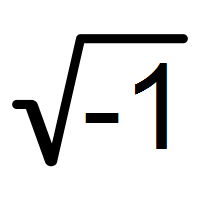
Khám phá căn bậc hai của số âm một và tầm quan trọng của nó trong toán học. Tìm hiểu về số phức và các ứng dụng của chúng trong khoa học và kỹ thuật.
Căn Bậc Hai Của Số Âm Một
READ MORE:
Khám phá cách tìm căn bậc hai của một số âm và hiểu rõ về số phức và tầm quan trọng của chúng trong toán học. Hướng dẫn chi tiết giúp bạn nắm vững khái niệm này.
Cách Tìm Căn Bậc Hai Của Một Số Âm


